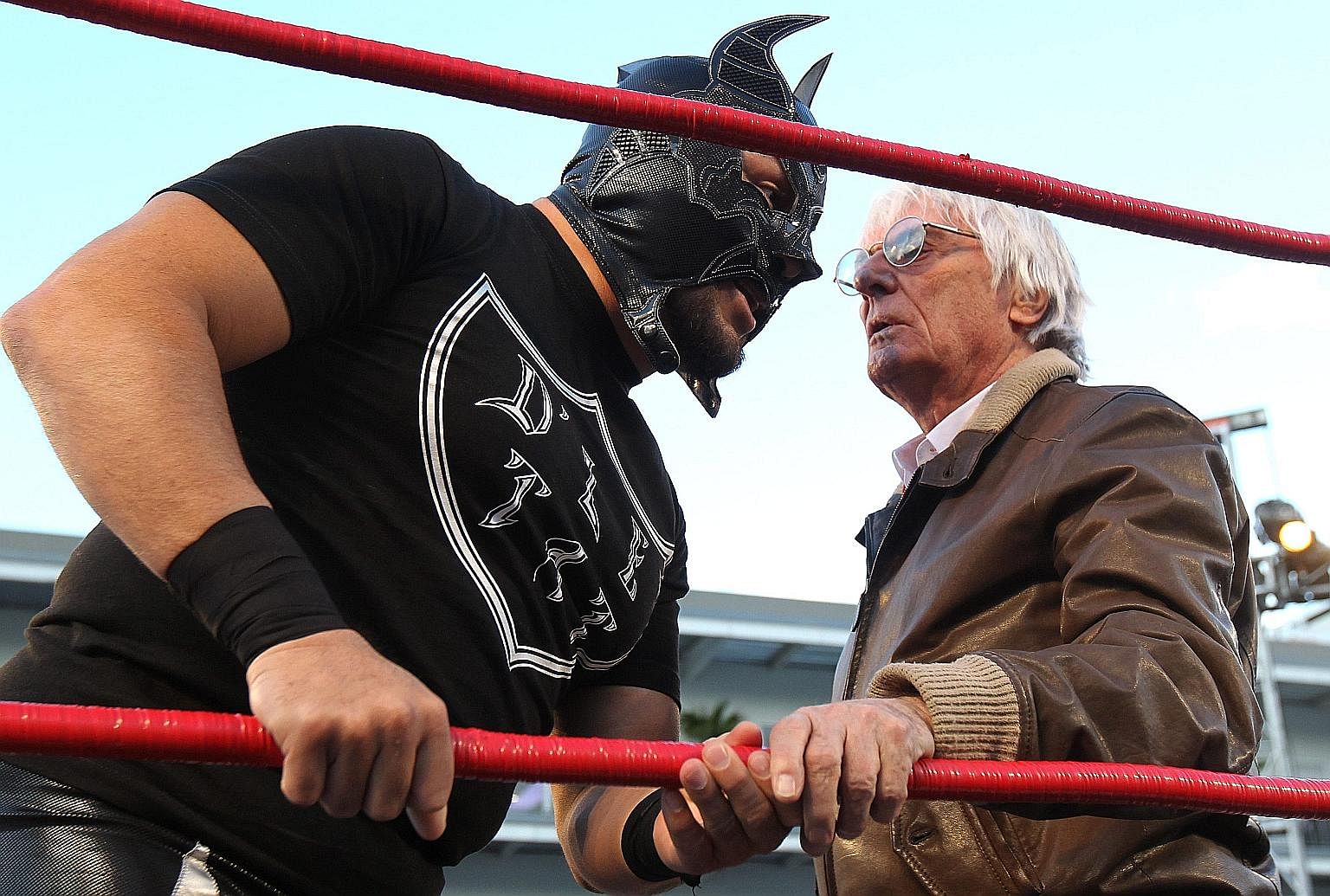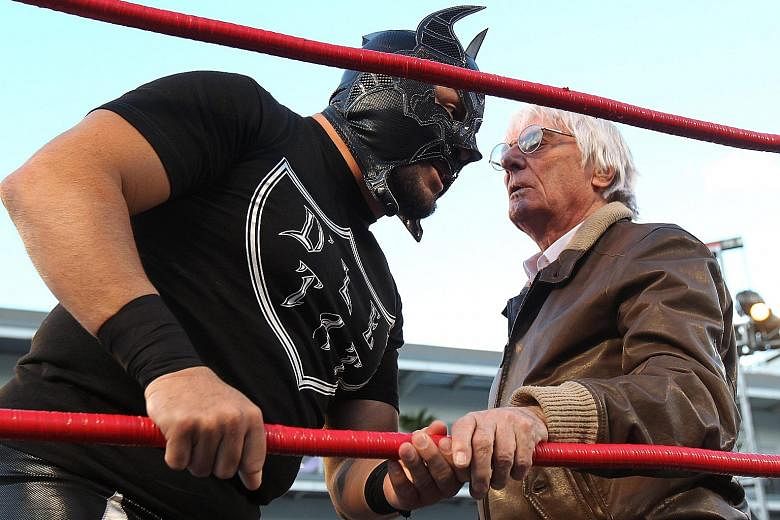There are, almost always, grains of truth in what Bernie Ecclestone says about "his" business.
The recent US$ 4.4 billion (S$6.13 billion) sale of Formula One to American tycoon John Malone's Liberty Media must change the way that motor racing projects itself. But by the time that happens, Bernie could be gone.
Yes, even Bernie.
He turned 86 yesterday, and, hot-footing it from the United States across the border to Mexico, Ecclestone still gave the impression of being an elderly imp lording it over his very own Scalextric slot-car racing track.
He said it is business as usual, but he threw out a few top-of-the-head caveats to the travelling press.
He said he hopes for a Donald Trump victory, and could see himself convening a Trump accord with Bernie's pal, Vladimir Putin.

Like I said, always a grain of truth in Ecclestone's musings.
He said further things designed to ruffle feathers. Things like if Trump were to build a wall to keep Mexicans out of the US, he, Bernie, wants to build smaller walls around every racing circuit to keep drivers on the asphalt.
"In the old days," he said, "people would come to a race and think that somebody could get killed. Today, they come to a race knowing nobody is going to get killed. Which is good.
"But I want to build 40cm walls around the corners. I keep being told that they (the drivers) must not go off the road - they wouldn't this way.
"They don't go off the road in Baku (Azerbaijan) and I've never seen them go off in Monaco. Or Singapore. And they're probably some of the good races."
Ecclestone's memory extends further back than most of us, so he ought to know that there was a time (two in fact) when racing drivers overshot the chicane at Monte Carlo and finished up at the bottom of Monaco harbour.
True, those were different times. Dangerous times too.
The Italian Alberto Ascari ditched his Lancia into the deep water in 1955, and an Aussie, Paul Hawkins, followed him into the harbour in 1965.
Both survived to race again. But both died young - as motor racers did in their era. Four days after overshooting the chicane in Monaco, Ascari was killed when his car went out of control at Monza.
Asacri's fatal crash eerily mirrored that of his father Antonio, also a racer, also aged 36 when he was killed in a crash 30 years previously.
Hawkins seemed similarly fated. His dip into the Mediterranean at Monaco was followed by an accident in a touring car race at Oulton Park, England in 1969 when his Lola T70 smashed into a tree and burst into flames. He was 31.
Those dreadful deaths, and of course the shocking demise of Brazil's Ayrton Senna at San Marino in 1994, led eventually to much, much safer rules, regulations and - as near as man can make them - indestructible F1 cars.
High-speed accidents still happen. Ecclestone reminisced this week about the spectacular smash in Melbourne at the start of this season when Fernando Alonso was somersaulted into the air and landed upside down.
"When you have a big shunt like Fernando's," Ecclestone observed. "We ought to put up big sheets around the scene, bring in the ambulance and take him away.
"He goes to the hospital and later on you announce that, thank God, he's (back) out. A bit of showbiz. People like that."
Most people didn't like the terrible accident in Japan two years ago when Jules Bianchi's car struck a crane off the track, and the Frenchman did not survive his injuries.
Yet Ecclestone's vision of having immovable walls around tracks just possibly touches a public nerve. It is unlikely to be coincidental that he spoke his mind in Austin, Texas, before the F1 circus left town.
An American company will soon be the new rights owner. It is the land where big bucks are thrown at sports in exchange for thrills and spills, and the attraction of the unknown.
Conversely, the US is the world capital of litigation. And throwing health and safety restrictions around sports, even where the participants sign off their rights to sue the owners, doubtless leads us to the kind of sanitised circuits such as the one at Austin.
The track is 19km south of Austin, but looks like it is in the middle of nowhere. It has no challenging streets like Monaco, Baku or Singapore. Nothing innovative like Singapore's spectacular night lighting.
Austin has a surfeit of safe run-off areas where drivers can spin off the track to their hearts' content.
Bernie didn't use the word "boring". He wouldn't, within earshot of the new pay master. But it is bad showbiz watching cars go round and round with practically no consequence for going off the tarmac.
F1 in that respect is cold beer compared to IndyCar at Indianapolis or the Nascar classic at Daytona. To capture the American imagination, F1 is going to have to break the mould of a two-car Mercedes processional race with bickering drivers at the wheel.
But, apparently, I have this all wrong. Bernie's drive is beyond price. Forbes lists his wealth at US$ 3.1 billion, give or take a bit, given the astonishing spending antics of his daughters.
He, a trawler-man's son, is damning about the team owners' motivations for taking part in his game. "There are too many in it for money," he said, while concluding his media chat this week.
"What I did, I didn't do for money. The same with Ron Dennis and Frank Williams. We all made money, but it wasn't our intention, The trouble today is we are getting people whose intention is solely to make money."
Unless Liberty drives him off track, birthday boy Bernie has no intention of giving way. He's the accidental billionaire who believes the bottom line is to put the fizz, the perception of danger, back into F1.


